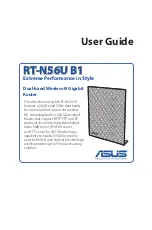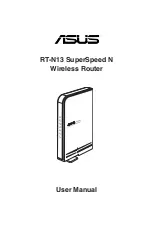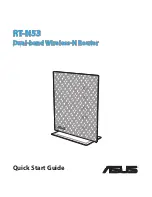
Software User Manual
D-Link Unified Access System
02/15/2011
Document 34CS3000-SWUM104-D10
Page 37
•
Avoid placing the AP near sources of interference, such as PCs, microwaves, and 2.4 GHz cordless phones.
•
Keep the AP away from large metal surfaces.
•
Position the antenna horizontally to increase the up-and-down range, or position it vertically to increase side-to-side
coverage.
•
When APs are within broadcast range of each other, use non-interfering RF channels (five channels apart for the
802.11b/g radio).
How close you place APs to each other depends on the RF transmission power level, the number of wireless clients on your
network, and the channels the APs use. The RF signal transmission power level directly affects the broadcast range of the
AP signal. If the power level is too low, wireless clients will not detect the signal or experience poor WLAN performance. If
the power level is too high, the RF signal might interfere with other APs within range. If the RF signal broadcasts beyond the
physical confines of your building or network, it increases the security threat to the network.
When the power level is high and RF broadcast area is larger, more wireless clients can detect the signal and associate with
the AP. An increase in the number of wireless clients that associate with the AP generally means that the amount of traffic
the AP receives and transmits increases as well. You can limit the network utilization level allowed on an AP to prevent
wireless clients from experiencing slower network speeds. However, once the network utilization is reached, new clients are
unable to associate with the AP. If an AP frequently reaches the network utilization limit, it might indicate that you should add
another AP nearby. You can configure the APs to automatically adjust the power and channel to the needs of the network
environment.
N
ETWORK
P
LANNING
TO
S
UPPORT
L
AYER
3 R
OAMING
With the D-Link Unified Access System, mobile stations can maintain their IP connections while roaming from one access
point to another even when these access points are attached to different IP subnets. This feature enables Voice over IP
(VoIP) deployments on 802.11 subnetted networks.
It is often necessary to subdivide the enterprise IPv4 network into several subnets. An access point may be directly attached
to the Unified Switch or it may be located several router hops away from the Unified Switch.
To support layer 3 roaming, it is necessary to keep the wireless client's IP address unchanged while it roams over different
subnets. This guarantees seamless roaming as the IP changeover process does not take place while wireless clients roam
across subnet borders.
The D-Link Unified Access System provides two ways to prevent the IP address of a roaming client from changing:
1
You can associate the SSID for roaming with a VLAN and configure the network devices on your network to allow VLAN
trunking across different subnets. By doing this, the client will always stay in the same VLAN and retain the same IP
address while it roams.
This approach is appropriate when it is not difficult to configure VLAN trunking on devices in the network.
2
You can associate the SSID for roaming with a tunneled subnet. In this case, the switch uses IP tunneling to establish a
link between itself and the access point it manages. The switch routes all IPv4 unicast frames so that the wireless
networks are perceived as locally attached networks by the Unified Switch.
Routing must be enabled on the switch to support L3 roaming.
<Link>Figure 10 shows a single wireless client as it roams among three APs in three different subnets. A D-Link Unified
Switch controls the three APs. When the wireless client connects to any of the APs, it receives an IP address from the Unified
Switch that is in the L3 Tunnel subnet. As the client roams among the APs, it maintains its connection to the WLAN and
keeps the same IP address that the switch originally assigned it. All traffic the client sends and receives goes through the
switch.
















































